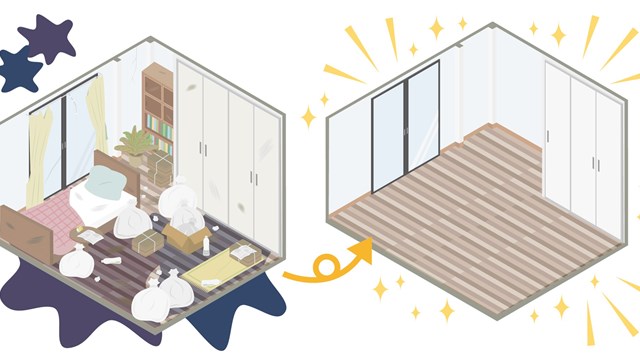Ask people to list the household chores they dislike most, and chances are, doing laundry will consistently rank among the top ten. The need and appreciation for clean clothes gets overshadowed by the inconvenience of constantly having to wash and dry them.
So, when it comes to laundry, “people want flexibility,” says John Sellier, the regional director of sales for Mac-Gray Laundry Services, which is headquartered in Waltham, Massachusetts, but provides services nationwide. “They want the convenience of being able to do their laundry when they want, how they want.”
Through a merger in 2014, Coinmach and Mac-Gray together now own more than half the market share of condos and HOAs in the country. CSC ServiceWorks, the parent company, owns a family of nationwide businesses, including Coinmach Corp., Mac-Gray, ASI Campus Laundry Solutions, Sparkle Solutions Corp., Appliance Warehouse of America, AIR-Serv, AirValet, Service Directions Inc. and Super Laundry.
A Necessary Amenity
It’s a necessary amenity, according to David Kule of ACES Laundry Service in Hartsdale, and that is why “a lot of new buildings have washers and dryers built into the apartments.” And, he adds, “Even where it’s prohibited, we’ve found people put them in anyway.” Unfortunately, these less-than-legit installations—often done by the resident themselves—can lead to huge problems if a hose or washer leaks and causes damage to adjoining units.
While it’s true that new construction touts space for individual laundry amenities, community laundry facilities still are still the norm in older co-ops and condominium complexes, as well as newer condominiums, which have been converted from apartment buildings where the plumbing will not allow for in-unit machines. Gone, however, are the days of dim and dingy laundry rooms located in a basement that no one really wanted to visit.
“Years ago, I’d walk into a laundry room and it would be dark and had probably 10-year-old paint. They were dungeons,” says Mark Eisler, vice president of sales for Hercules Corp. in Hicksville. “Today, they’re well-lighted, have nice-looking equipment, tile floors, new lighting. They’re really an amenity. It’s a whole different beast. When co-ops came into play, people really started to take an interest in the buildings. They wanted the laundry room to look as nice as the lobby. It’s a quality-of-life issue.”
Daniel Scharfman of ACES Laundry Service agrees. “We look at buildings all the time, and we find that if you do it right, it’s an amenity; it really makes your building better,” he says. As part of the company’s service, “We’re willing to build out rooms … repaint, maybe put in new windows, LED lighting, to make them nicer.” And, Kule adds, those efforts are also done with an eye to improving energy efficiency.
Forget the Quarters
In fact, community laundry as we know it has changed dramatically for residents of many multifamily co-op and condo buildings. Some these days are going really high-tech, with laundry rooms that do everything except put your clothes in the machine and fold them when they’re done.
For example, you won’t see residents lugging bags or cans of quarters along with their clothes as they head to the laundry room today. “We’re using debit and credit cards,” Scharfman says. “It really makes life easier. People are used to using their cards, they like it, and it’s simple.” Each machine, he explains, has a card reader. Users can simply swipe their credit or debit card just as they do with any other purchase.
“Quarters,” Eisler agrees, “are history. It’s like a black-and-white television.” In the “old days” of coin-op machines, he says, “there were so many service calls because of jammed coin slides, and people trying to use different currencies, or ‘slugs,’ to beat the system.” His company uses coded value cards that customers can load from their debit or credit cards—and then use themselves, or give, along with the code, to someone else who might be doing the laundry for them.
Also gone are the days of making multiple trips down to the laundry room—or hovering over an occupied machine—waiting to pounce the moment it becomes available. Many laundry companies now offer remote monitoring systems that eliminate the need to jockey for machines. Hercules developed a “Smart Center” system that allows residents to see if machines are available—from the comfort of their living rooms. “You can go on the website to see if a machine is in use or available, so you don’t have to schlep your clothes down to the laundry room, only to be disappointed,” says Hercules project manager Adam May. “You can receive a text or an email when a machine becomes available. And if you have clothes in a machine, you can be notified when they’re done.”
Faster communication options have improved service times, too, so that customers aren’t left without laundry facilities at peak times. ACES posts its service email address next to machines, and prides itself on speedy service. The Hercules Smart Center’s touch screen allows customers to send immediate notification to the company if a machine goes down. “We respond within 24 hours,” says May. “We have seven day a week service on all our washers, dryers and smart card technology.”
Running the Numbers
When it comes to the financial side of community laundry facilities, people hold differing opinions about what “cost effective” means.
Scott Scarpato, president of Massachusetts-based Automatic Laundry Services Company Inc., says his company takes a lease interest in the laundry facilities it installs. “We pay rent to the associations with long-term leases where we take care of all the upfront costs, so no money is spent on the part of the condominium community. Then we’re responsible for maintaining and servicing the machines and collecting the money, which relieves the association of additional costs and duties.”
And, “Condo associations can certainly purchase the equipment from us and own it, and we walk away,” says Sellier, “but in my experience, condominium associations rarely do this. They don’t want to be responsible for collecting and handling money and calling up Joe’s Service down the street when a machine isn’t working.”
Barry Heller, the vice president of marketing at Hercules Corp., agrees that most co-ops or condo associations “don’t want to be in the laundry business,” although the company is certainly willing to sell the equipment, along with a service contract. Instead, customers generally prefer to have Hercules provide and maintain the equipment, and simply share in the profit.
There was a time when laundry agreements included automatic renewal provisions that created problems for some buildings. But Sellier says automatic renewal provisions are not as great an issue these days. “Now most laundry companies have longer fixed term leases—5, 7, or 10 years—with no (automatic) renewals, because the previous documents were onerous. Property management is so volatile that you may have multiple managers over the term of the lease. If you didn’t cancel one year prior, the contract would simply renew under the same terms without the new manager knowing. Now the industry standard lease document is one that is friendlier to both the companies and to the condo owners.”
Clean Green Machines
Another area of agreement among property managers and vendors is the need for community laundry facilities to be more energy efficient. “Energy efficiency has become paramount for all large manufacturers,” says Sellier. “We now use front-loading washing machines which extract the water at a faster rate, which shortens the dry time, which uses less energy and also makes the whole process move faster for the consumer.”
In 2007, the Department of Energy set standards for regulating energy and water factors for commercial machines, restricting the amount of water in a cycle and how much energy could be used to wash and dry clothes. The result was that condominium associations received a huge savings to their water, sewer and electrical bills and added a greater environmental benefit to the community.
“They restricted how much water in a cycle and how much energy could be used to wash and dry people’s clothes,” Scarpato says. He added that “condominium associations received a huge savings to their water, sewer and electrical bills and added a greater environmental benefit to the community” as a result of the new standards.
“We’re very bullish on high-efficiency equipment,” May says. “Years ago, a top-loading 14-pound machine consumed 36 gallons of water. The new high-efficiency machines with a 20-pound capacity—six pounds larger—only consumes 12 gallons of water.” And from the customer’s end, there’s an immediate savings, too, since the high-efficiency units also use less detergent. “We’ve had people report back to us that they had old top-loading machines, and after a year with the new machines, they are wowed by the tremendous water savings,” especially as the cost of water rises, Heller says.
In addition to using less water, the new machines spin more water out of the clothes, saving on both time and expense in the drying cycle, Kule notes.
For condominium associations looking to install these more energy-efficient machines, leasing rather than owning allows for a speedier transition. Associations that own their machines are more likely to purchase new machines only when the old ones need to be replaced. That means there could be a mix of old and new equipment in a laundry room.
The other advantage to vendors replacing the machines is that residents are more quickly able to make use of the “bells and whistles” of newer manufactured machines. Gone are the days of simply choosing the size of a load and the temperature of water. As both vendors and property managers explain, now machines provide residents with more choices and flexibility. The type of clothing is separate from water temperature which is, in turn, separate from cycle choices such as a newer “hand wash” cycle. Also, residents have a choice of more dryer settings, including “fluff,” which is equivalent to line-drying clothes, only much faster—and, obviously, indoors.
So, for condominium residents who have ranked doing laundry as one of their top ten most-hated chores, the good news is that laundry vendors, the Department of Energy, and property developers, owners, managers, and associations are all working together to make that particular chore a little more palatable.
Paula Castner is a Massachusetts-based freelance writer. Associate Editor Pat Gale also contributed to this article.







Leave a Comment